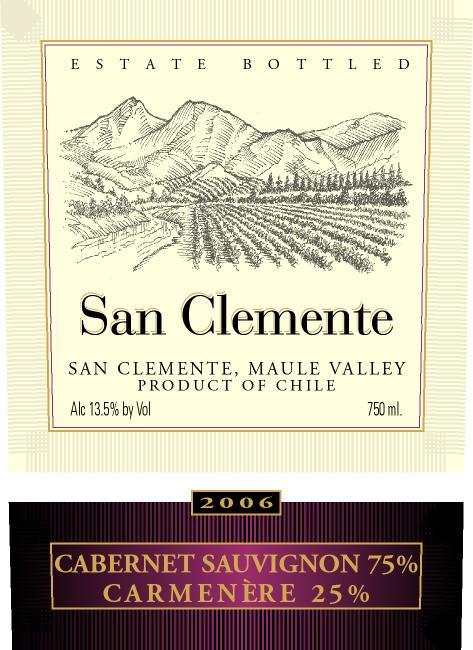2006 Maule Valley Cabernet Sauvignon, Carmenere
The San Clemente Bottled San Clemente is a captivating red wine that showcases the unique characteristics of the Maule Valley region in Chile. Crafted predominantly from Cabernet Sauvignon and Carmenere, this vintage exudes a full-bodied richness, delivering a robust sensory experience. With a well-balanced acidity, it enhances the wine's overall brightness, making each sip refreshing. The fruit intensity is pronounced, featuring luscious notes of blackcurrant and dark cherry, complemented by subtle hints of spice and cedar that add depth to its profile. The tannins are notably structured, providing a firm backbone that supports the wine's complexity. This delightful offering is dry, allowing the intricate flavors to shine through, making it an enticing choice for any wine enthusiast.
The San Clemente Bottled San Clemente is a captivating red wine that showcases the unique characteristics of the Maule Valley region in Chile. Crafted predominantly from Cabernet Sauvignon and Carmenere, this vintage exudes a full-bodied richness, delivering a robust sensory experience. With a well-balanced acidity, it enhances the wine's overall brightness, making each sip refreshing. The fruit intensity is pronounced, featuring luscious notes of blackcurrant and dark cherry, complemented by subtle hints of spice and cedar that add depth to its profile. The tannins are notably structured, providing a firm backbone that supports the wine's complexity. This delightful offering is dry, allowing the intricate flavors to shine through, making it an enticing choice for any wine enthusiast.




